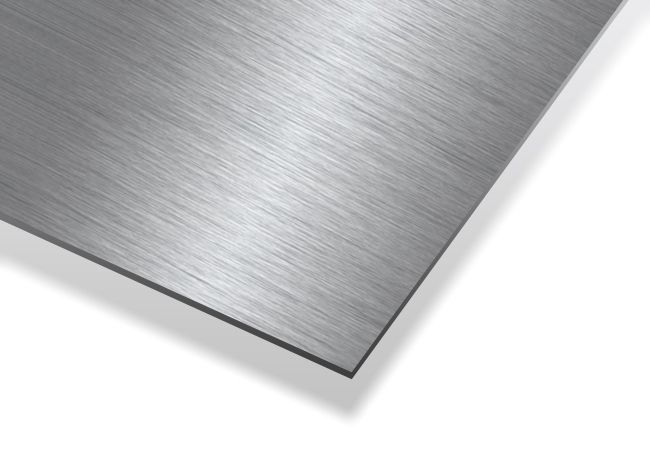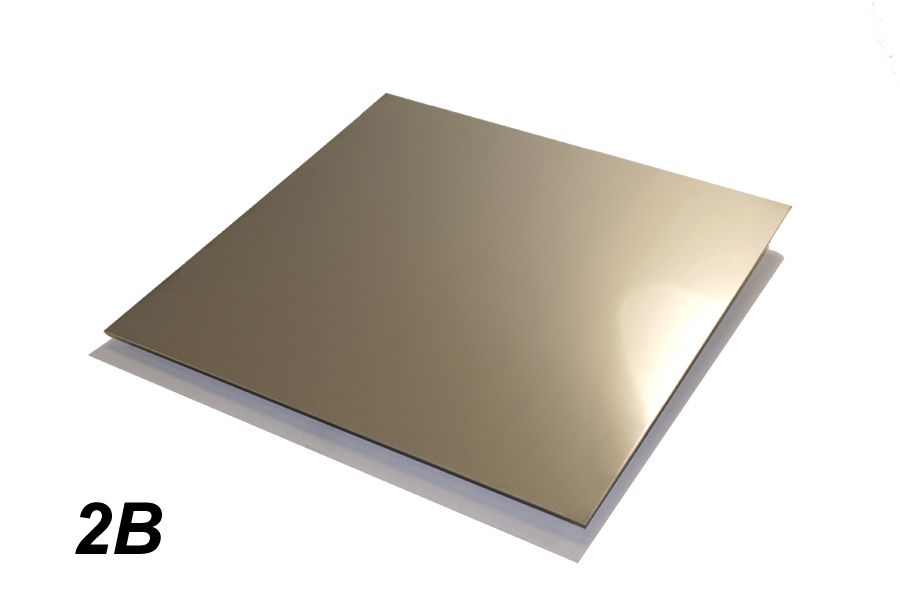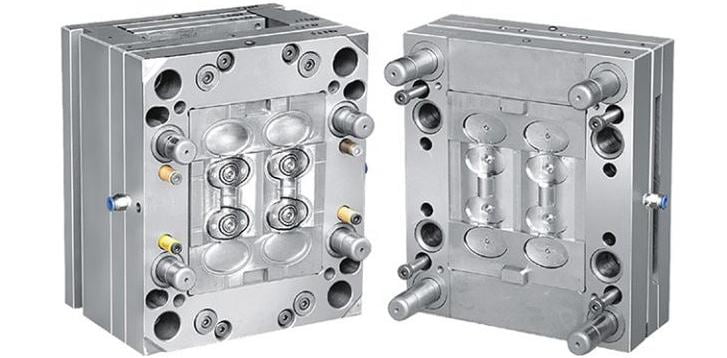In this article, you will learn about the various types of stainless steel finishes available and explore their advantages and the method of achieving them.
Types of Stainless Steel Finishes
Finishes are classified based on their surface roughness, gloss, and texture. Let’s explore some of the widely used types of stainless steel finishes

Stainless Steel Mill Finishes
This is the original stainless steel finish after manufacturing in a mill. These finishes are created during the rolling process, ranging from a dull or matte finish to a highly polished finish. The finishes are classified based on their surface roughness, measured in micro-inches.
- No. 1 Stainless Steel Finish: Famously known as HRAP, this finish often has a dull and rough appearance with a matte finish. To achieve this, you have to roll a piece of stainless steel through hot-rolling mills. This process will remove all impurities and increase the material’s corrosion resistance. The HRAP finish is suitable for industrial equipment or applications requiring a rough surface.
- No. 2B Stainless Steel Finish: This finish is standard where you desire a smooth and reflective surface, as in kitchen appliances, architectural applications, automotive trim, etc. You simply have to cold roll the stainless steel and anneal it in a controlled atmosphere.
- No. 2D Stainless Steel Finish: The No. 2D finish will leave your stainless steel with a dull surface and a slightly reflective matte finish. The material goes through a cold-rolling process, heat treatment, and pickling. If you need equipment with a dull yet reflective surface, you should go for stainless steel materials with this finish.

Stainless Steel Brushed and Polished Finishes
- No. 3 Finish: To achieve this finish, the material passes through a series of abrasive belts, creating a uniform, brushed pattern on its surface. The result of this process is a semi-reflective surface with a smooth finish. This finish is widely used for decorative trims, architectural applications, and kitchen equipment.
- No. 4 Finish: The No. 4 finish has a noticeable grain with a uniform reflective surface, and something as simple as a rough paper towel can remove the grain on the surface. Also known as the workhorse finish, the no. 4 finish is attractive and suitable for high-traffic areas.
- No. 6 Finish: With the No. 6 finish, the stainless steel surface will be reflective with a fine-grained brush pattern. To achieve this finish, the material passes through a series of abrasive belts and a final polishing step. This finish is suitable for producing elevator doors and high-end appliances.
- No. 7 Finish: This finish has a highly reflective surface without a buff effect. The no. 7 finish is common in high-end appliances and decorative trims.
- No. 8 Finish: Commonly used in decorative trim appliances, this finish is the standard for a highly reflective surface and a mirror-like finish. After a fine-grain brushing, the stainless steel goes through a final polishing with a high-gloss polishing compound.

Stainless Steel Patterns Finishes
Patterned stainless steel finishes are decorative finishes created by etching a pattern onto the surface of the stainless steel sheet or plate. The result is a textured surface with a unique visual appeal suitable for various architectural and design applications.
They are a great way to add visual interest and texture to a space while maintaining the durability and strength of stainless steel. Some popular patterns include:
- Diamond: A classic pattern that features a repeating diamond shape.
- Quilted: This pattern features a repeating diamond or square shape grouped to create a quilted effect.
- Checkerboard: A simple yet striking pattern that features a repeating checkerboard design.
- Linen: This pattern has a textured surface similar to linen fabric.
- Satin: A smooth, elegant pattern with a brushed appearance.

Colored Finishes
Colored stainless steel finishes enhance the appearance of a surface while improving its wear resistance and durability. They are decorative and suitable for wooden, plastic, and metal surfaces.

The most common colored stainless steel finishes include:
- Powder coating: you apply the powder coating electrostatically and cure it with heat: the heat application gives it a durable finish. Powder coating adds color and protects the metal surface.
- Anodizing: Anodizing is a method for coloring and protecting stainless steel surfaces through an electrochemical process. It produces a hard, durable oxide finish resistant to corrosion and wear and tear.
- Paint: Paint is a regular finish that adds color and protection to various surfaces. Many paint colors and finishes are available, including satin, matte, and glossy.
- Plating: This method involves applying a thin layer of metal, such as chrome or gold, to the surface of the stainless steel. This method will improve both the appearance and durability of the material.
How To Achieve Stainless Steel Finishes
You can get stainless steel finishes through various methods; here’s a brief overview of these techniques:
Mechanical Finishing Methods
Mechanical finishing involves using abrasive materials to alter the surface of the stainless steel. This technique is for finishes such as No. 3, No. 4, No. 7, and No. 8 mirror finish. The process involves using a series of increasing grit-size abrasive belts to create a uniform, brushed pattern on the surface of the stainless steel.
You get the final finish using a polishing compound and a buffing wheel to create a highly reflective surface.
Electropolishing
Electropolishing involves removing a thin layer of the stainless steel surface to improve its properties. To do this, you immerse the metal in an electrolyte solution while passing a current through it. This process results in a highly reflective mirror-like finish that is corrosion-resistant and free from imperfections.
Passivation
Passivation happens by dipping the stainless steel in an acid solution and rinsing it with water. The process improves the material’s resistance to corrosion while removing any impurities from its surface.
Chemical Finishing
You can get a clean chemical finish and an impurity-free surface with the appropriate chemicals. After applying the chemicals, you just need to pat the surface dry.
Advantages of Stainless Steel Finishes
Stainless steel has lots of advantages and characteristics that make it a top pick among industry experts. Some of these benefits include:
- Aesthetically pleasing: Stainless steel finishes have a modern, clean, and visually appealing aesthetic.
- Adaptability: Many industries, like automotive, medical, food processing, etc., use parts and tools with stainless steel finishes.
- Resistance to Corrosion: Stainless steel finishes are ideal for environments with high moisture and chemical exposure as they are resistant to corrosion.
- Environmental friendliness: Stainless steel finishes are recyclable.
- Hygienic: stainless steel finishes are easy to clean and maintain, making them suitable for medical and food processing equipment.
- Durability: they are durable and require minimal upkeep, making them a cost-effective choice
- Long lasting: Resistant to damage and wear and tear, making them ideal for high-traffic areas.
Maintenance and Care of Stainless Steel Finishes
Stainless steel finishes may be highly durable and resistant to corrosion, but they still require proper maintenance to ensure longevity and aesthetic appeal. To properly maintain your objects with stainless steel finishes, you should:
- Clean Regularly: Dirt, grime, and smudges will not accumulate on your stainless steel surfaces if you clean them regularly. When cleaning, use a soft cloth and a mild detergent solution because harsh cleaning solutions and tools can scratch the surface.
- Avoid Harsh Chemicals: Cleaning agents like bleach, ammonia, or acids contain harsh chemicals that can damage the stainless steel finish. If you must use chemical-containing cleaning agents, ensure they are stainless steel formulated. Also, follow the manufacturer’s instructions for use.
- Use the Right Tools: soft brushes or sponges are suitable for cleaning the stainless steel surface. Abrasive materials such as wire brushes or steel wool are inappropriate and can scratch the surface. Also, use separate tools for cleaning stainless steel and other surfaces to avoid cross-contamination.
- The direction of Cleaning: When cleaning the surface—especially those with brushed finishes—always follow the direction of the grain to avoid leaving scratch marks.
- Protect the Surface: Use protective films or covers to protect the surface of the stainless steel during transportation or storage. This way, you can prevent scratches or damage to the surface.
- Maintain Passivation: If the stainless steel has been passivated, it is crucial to maintain the passivation layer to ensure the corrosion resistance of the surface. Regular cleaning and maintenance can help maintain the passivation layer.
Conclusion
Stainless steel finishing does not just improve the aesthetic value of your material; it also improves the life span too. This guide gives you a head start to finding the right stainless steel finish that suits your peculiar needs. However, if you need a professional touch and consultation, contact us for all your stainless steel and metalwork needs.









